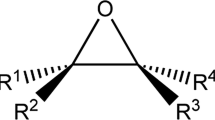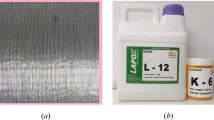Abstract
The goal of this article is to examine the effect of MAPP (malic anhydride grafted polypropylene) used as a coupling agent on the dielectric properties of polypropylene filled banana fiber composites. Banana fiber reinforced polypropylene composites were prepared by using twin screw extruder and injection molding apparatus. The dielectric parameters of both coupled and uncoupled composites were calculated in the experiment with temperatures from 30 °C to 150 °C in steps of 10 °C and frequencies in the 20 Hz to 10 MHz range. Composites prepared using a coupling agent and increasing the content of the banana fiber was found to have a major change in dielectric properties. Compared to un-coupled composites, the dielectric constant (ε′) has increased by up to 15–20% in coupled composites. Various polarization mechanisms can be related to boosting dielectric properties in coupled composites. Anomalous behavior in the transition region was shown by the dissipation factor in both composites. Low electrical conductivity has been demonstrated by coupled composites and can therefore be used for many insulating applications. Using TGA study, degradation temperatures of banana fiber, PP and composites were examined. Scanning electron microscopy morphological studies have shown that MAPP integration helps to achieve proper adhesion between banana fiber and polypropylene.
Similar content being viewed by others
References
O. Fares, F. M. AL-Oqla, and M. T. Hayajneh, Mater. Chem. Phys., 229, 174 (2019).
R. Bhatnagar, G. Gupta, and S. Yadav, J. Sci. Eng. Res., 6, 4 (2015).
K. G. Satyanarayana, J. L. Guimarães, and F. Wypych, Compos. — A: Appl. Sci. Manuf., 38, 1694 (2007).
N. Venkateshwaran and A. Elayaperumal, J. Reinf. Plast. Compos., 29, 15 (2010).
A. Ivanovska, D. Cerovic, S. Maletic, I. Jankovic Castvan, K. Asanovic, and M. Kostic, Cellulose, 26, 5133 (2019).
C. Dash, A. Das, and D. K. Bisoyi, J. Compos. Mater., 54, 23 (2020).
E. Jayamani, C. P. Tay, M. K. B. Bakri, and A. Kakar, J. Vinyl Addit. Technol., 24, E201 (2018).
S. Madhavi, N. V. Raju, and J. Johns, Fiber. Polym., 22, 3183 (2021).
H. B. Bhuvaneswari, D. L. Vinayaka, M. Ilangovan, and N. Reddy, J. Mater. Sci.: Mater. Electron., 28, 12383 (2017).
J. Wang, C. Wu, R. Liu, and S. Li, Polym. Bull., 71, 1263 (2014).
T. Gupta, “Copper Interconnect Technology”, SpringerVerlag, New York, 2009.
A. M. Poulose, A. Y. Elnour, A. Anis, H. Shaikh, S. M. Al-Zahrani, J. George, M. I. Al-Wabel, A. R. Usman, Y. S. Ok, D. C. W. Tsang, and A. K. Sarmah, Sci. Total Environ., 619–620, 311 (2018).
S. Sudha and G. Thilagavathi, J. Ind. Text., 47, 1407 (2018).
S. Nayak and J. R. Mohanty, J. Nat. Fibers, 16, 688 (2019).
M. Jacob, K. T. Varughese, and S. Thomas, J. Mater. Sci., 41, 5538 (2006).
A. Paul, K. Joseph, and S. Thomas, Compos. Sci. Technol., 57, 67 (1997).
P. Li, Y. Tao, and S. Q. Shi, BioResources, 9, 2681 (2014).
P. Satish, M. Daniel Silas Kumar, A. S. Bhanu Prasanna, and C. Dilip Sham Prakash, Materials Today: Proceedings, 28, 1039 (2020).
M. N. Bora, G. C. Baruah, and C. L. Talukdar, Thermochimica Acta, 218, 435 (1993).
D. Pathania and D. Singh, IJTAS, 1, 34 (2009).
N. Chand and D. Jain, Compos. Part A: Appl. Sci. Manuf., 36, 5 (2005).
G. M. Tsangaris, G. C. Psarras, and A. J. Kontopoulos, J. Non. Cryst. Solids, 131–133, 1164 (1991).
M. K. B. Bakri, P. L. NyukKhui, M. R. Rahman, S. Hamdan, E. Jayamani, and A. Kakar, “Acacia Wood Biocomposites”, pp.171–186, Springer, Cham, 2019.
D. Mahesh, K. R. Kowshigha, N. V. Raju, and P. K. Aggarwal, J. Indian Acad. Wood Sci., 17, 1 (2020).
Acknowledgment
The writers (MD & NVR) would like to express their gratitude to the Management and the Principal Global Academy of Technology for their continuing assistance in carrying out this research work. The authors are grateful for providing the laboratory facility to the Director & staff of the Institute of Wood Science and Technology, Bengaluru. The authors express their gratitude to Dr. K G Satyanarayana and Dr. Manjula R for the fruitful discussion regarding the present research work.
Author information
Authors and Affiliations
Corresponding author
Rights and permissions
About this article
Cite this article
Doddashamachar, M., Setty, R.N.V., Reddy, M.V.H. et al. Dielectric Properties of Banana Fiber Filled Polypropylene Composites: Effect of Coupling Agent. Fibers Polym 23, 1387–1395 (2022). https://doi.org/10.1007/s12221-022-4395-6
Received:
Revised:
Accepted:
Published:
Issue Date:
DOI: https://doi.org/10.1007/s12221-022-4395-6




